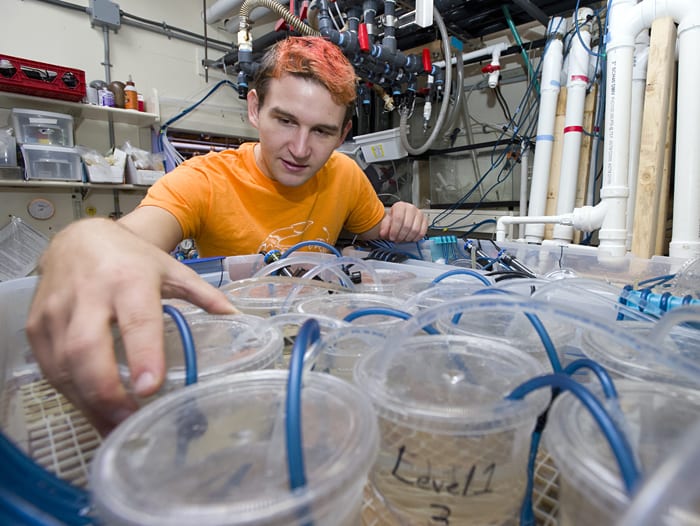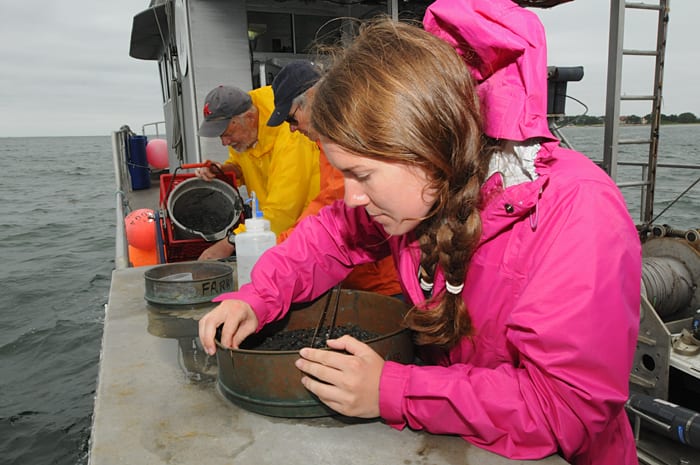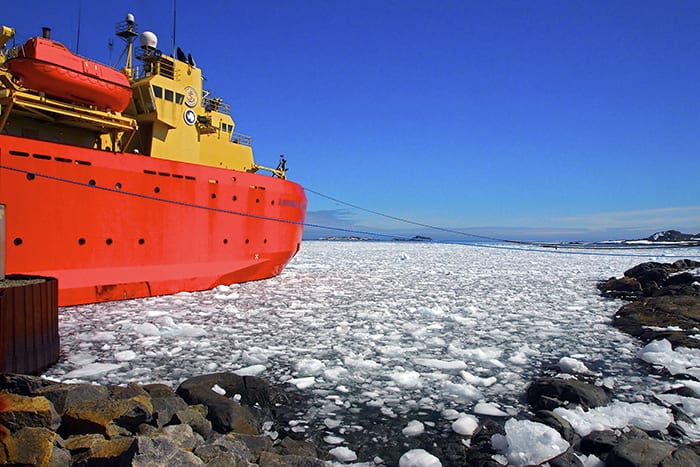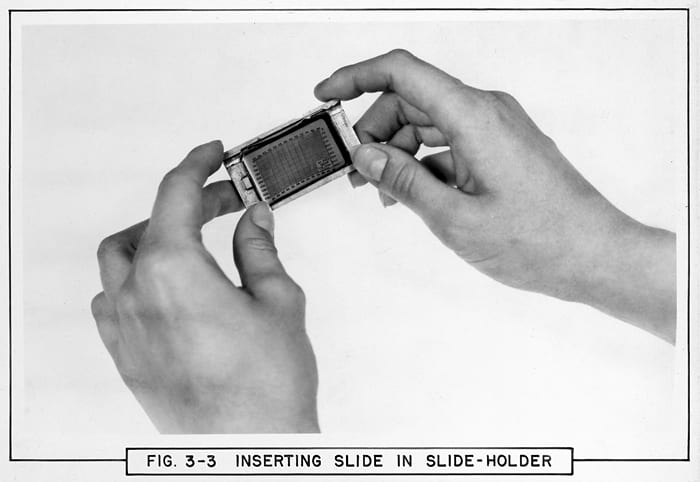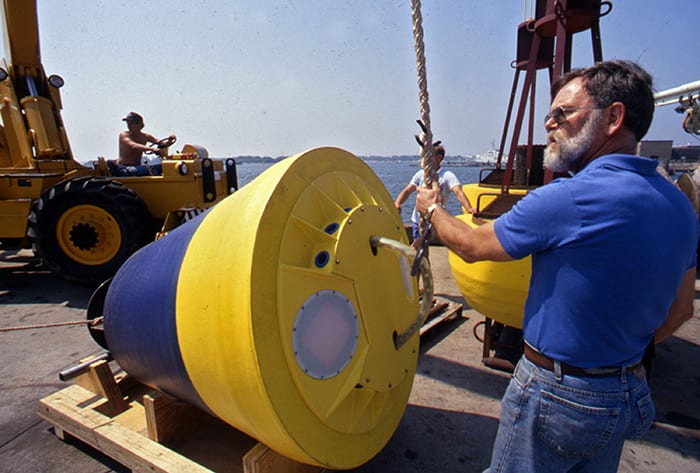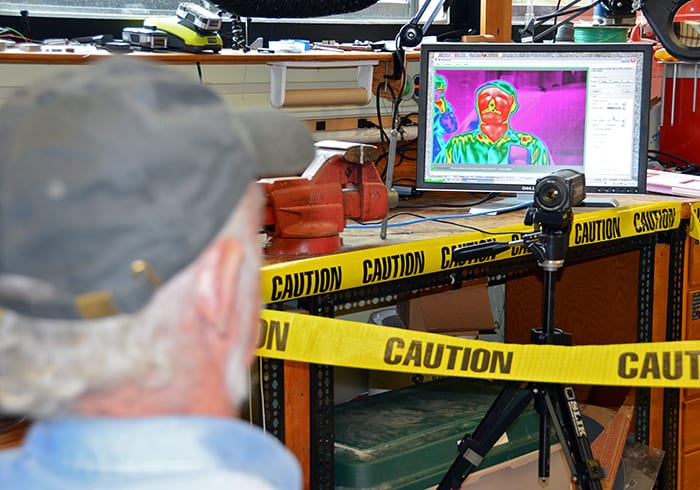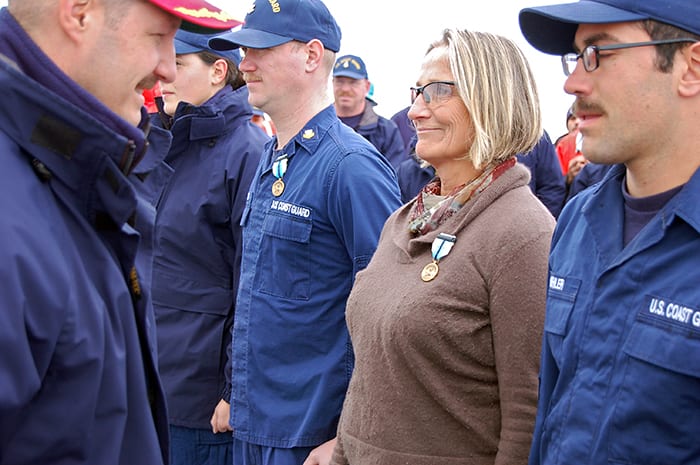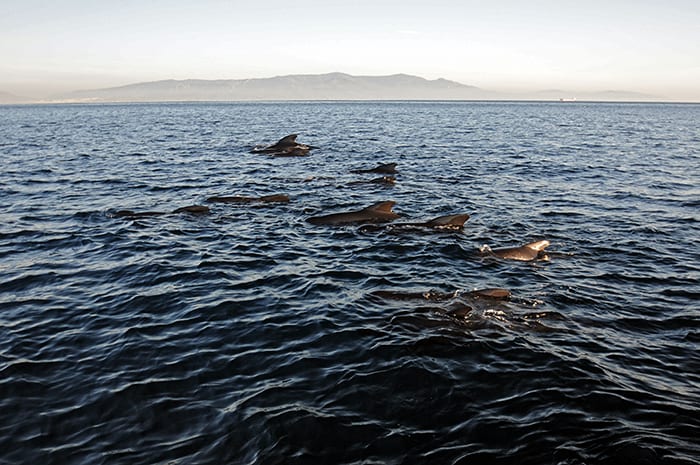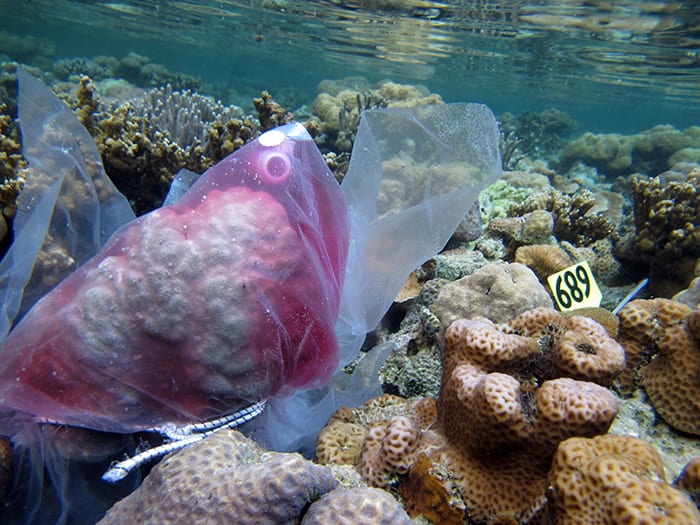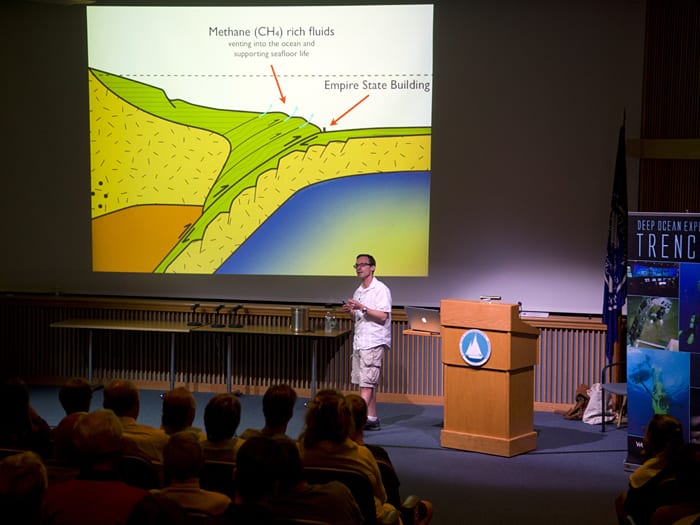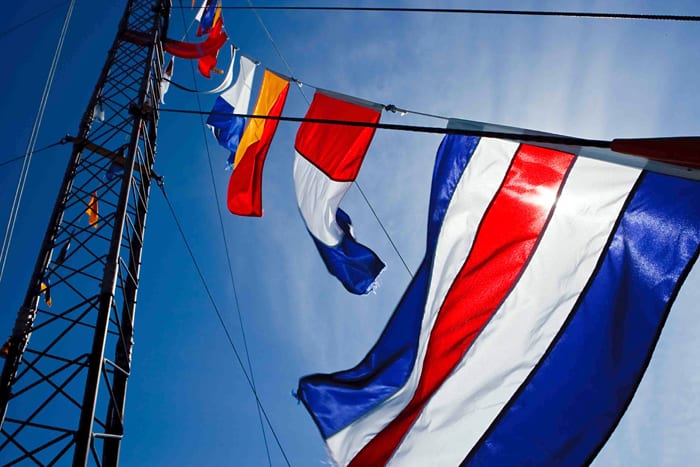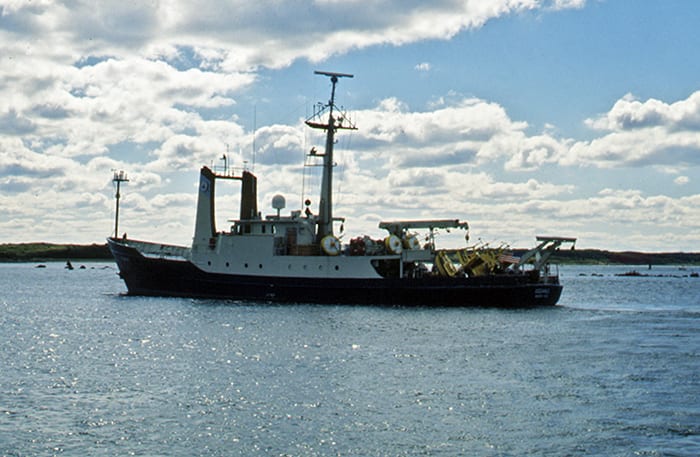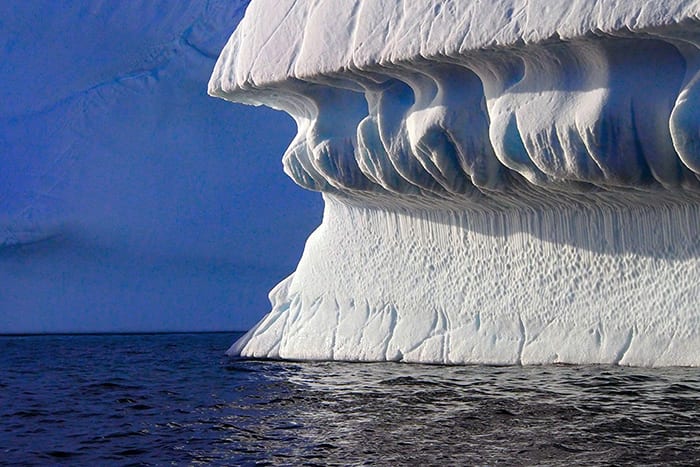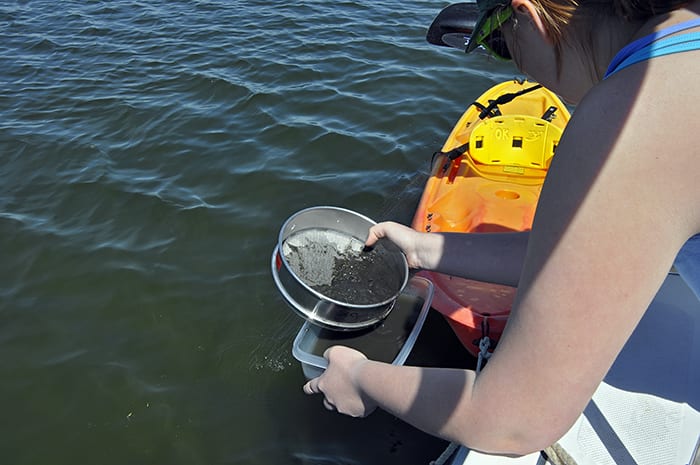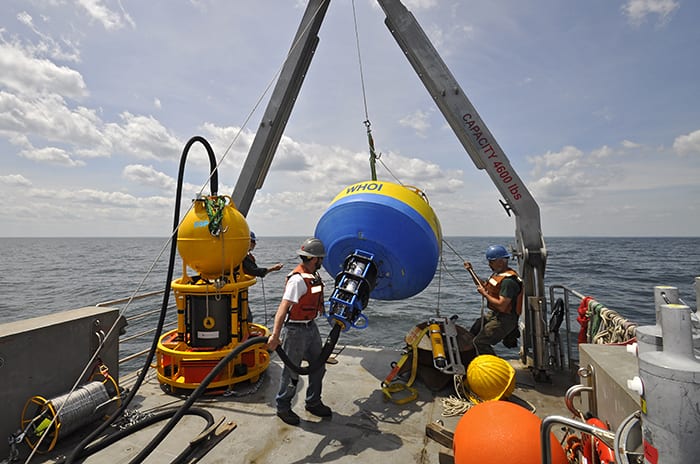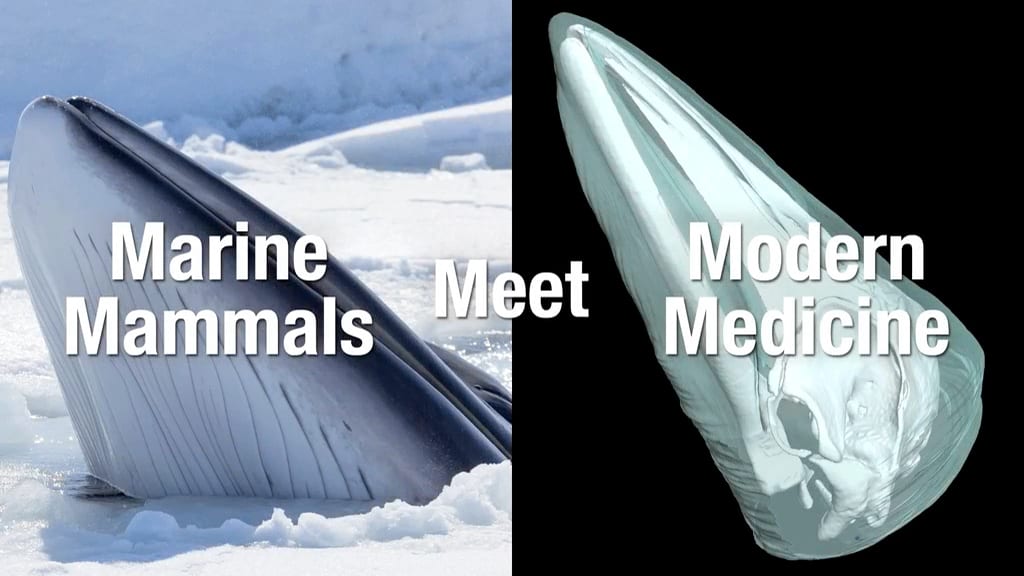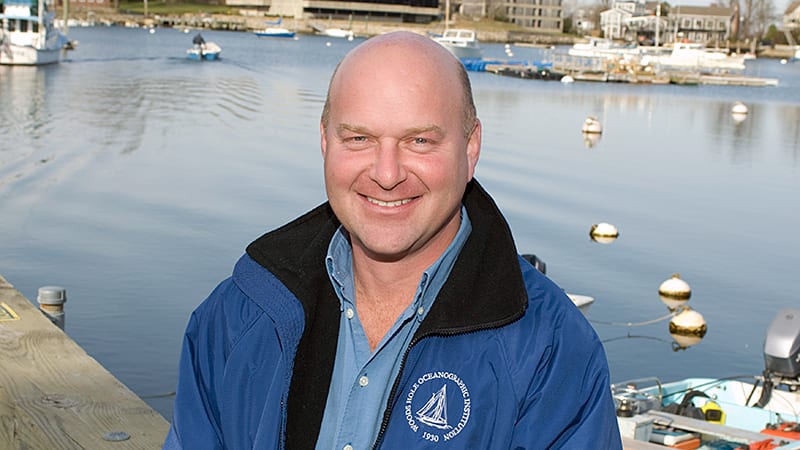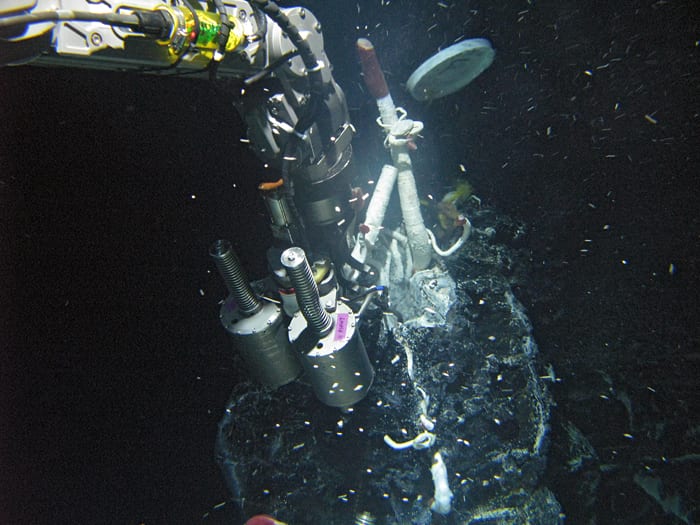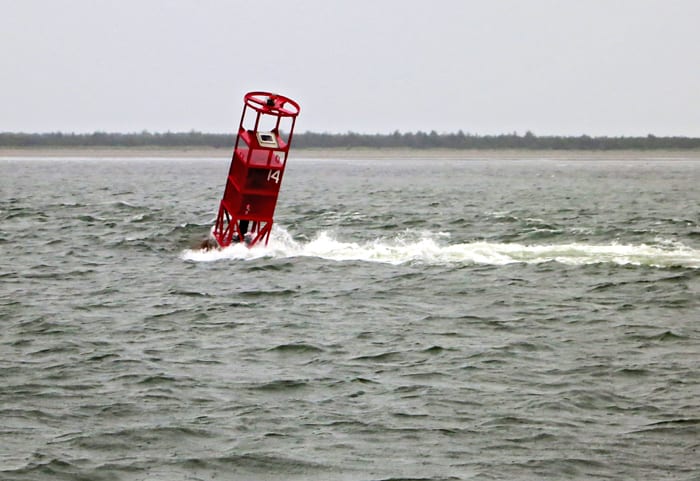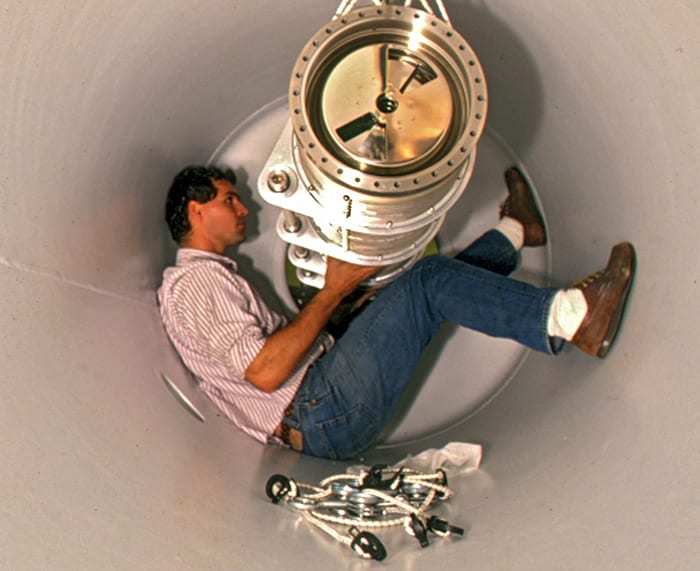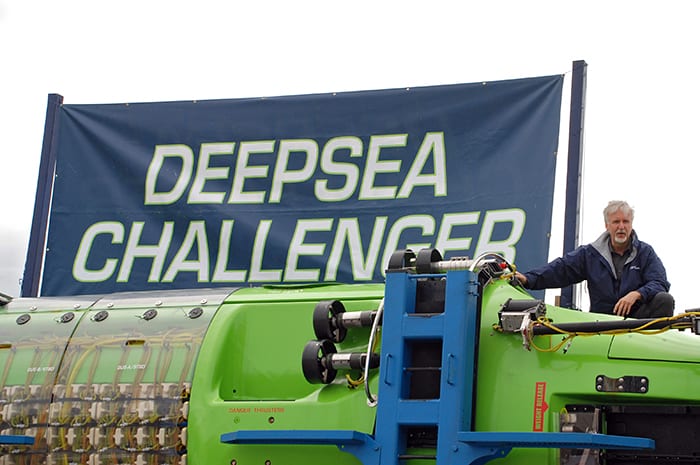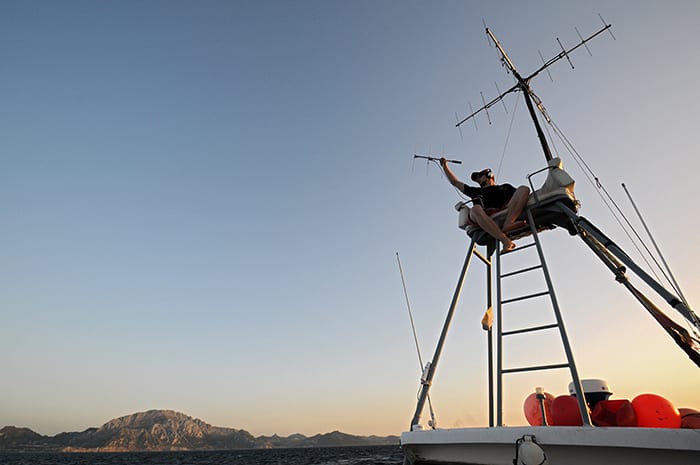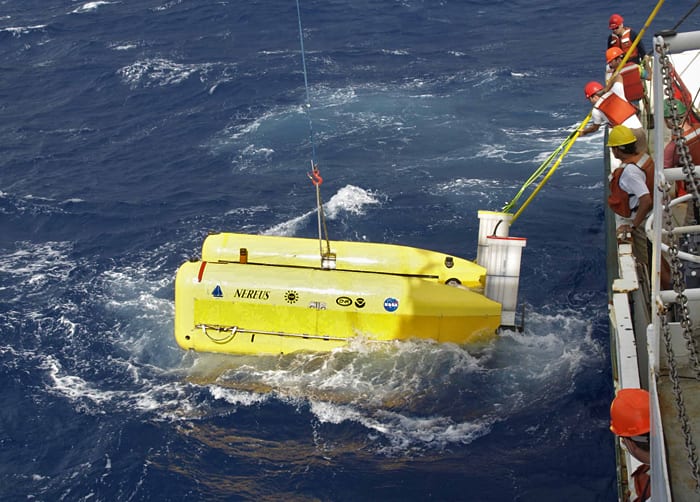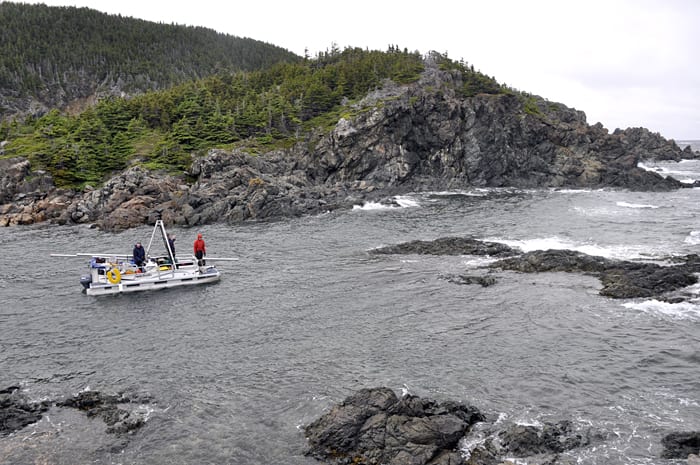Multimedia Items
Eggs by the Cup
Casey Zakroff, a graduate student in the MIT-WHOI Joint Program, adjusts transparent plastic cups in a water bath. The cups hold squid eggs in seawater bubbled with air containing normal…
Read MoreLearning by Doing
Carolyn Garrity, a 2013 Summer Student Fellow from the University of Maine, searches for specimens of benthic organisms in sediment collected from the bottom of Buzzards Bay. Each year the…
Read MoreSunny Outlook
On her first day in Antarctica, WHOI research associate Emelia Deforce photographed the R/V Laurence M. Gould docked on Anvers Island, which is home to the U.S. Antarctic Program’s Palmer…
Read MoreTool of the Times
Early in the twentieth century, oceanographers used a device called a bathythermograph (BT) to record water temperature beneath the surface on glass slides coated with smoke and oil to. Invented…
Read MoreReady for the Ice
Ken Fairhurst prepares to load an ice-ocean environmental buoy (IOEB) onto a ship in 1990 for a cruise to the Antarctic. IOEBs were designed to deploy instruments attached to a…
Read MoreGetting Warmer
Vermont teacher Doug Jaquette views an image of himself taken by a thermographic camera, which senses and records infrared (IR) radiation. The amount of IR radiation emitted by objects is…
Read More21 Days North
The U.S. Coast Guard awards Arctic Service Medals to anyone who spends 21 days north of 66° 33′ north latitude. By the end of a recent cruise on the Coast…
Read MoreMake Way for Whales
A pod of long-finned pilot whales surface in the busy Strait of Gibraltar. The whales are the focus of a joint study by scientists from WHOI and CIRCE (Conservación, Información…
Read MoreA Coral Timestamp
MIT-WHOI Joint Program graduate students Thomas DeCarlo and Hannah Barkley cover a coral colony in Palau with a bag containing a mixture of seawater and a harmless pink dye. The…
Read MoreDig That Trench
WHOI geophysicist Dan Lizarralde explains how trenches form in the seafloor at a WHOI public event on August 24. Several hundred people attended the event, which also included talks by…
Read MoreAll Dressed Up
In spring 2013, the crew of R/V Atlantis dressed the ship with flags in preparation for a private send-off of the ship and the newly upgraded submersible Alvin. After transiting the…
Read MoreHail, Oceanus
Loaded with buoys, the WHOI research vessel Oceanus left the WHOI dock in 1990 on one of the more than 500 missions it performed for scientists over the 35 years…
Read MoreSummer Scenery
The sights of summer in Antarctica invariably include ice. Researcher Emelia DeForce captured this image of a well-worn iceberg in January 2013, the height of austral summer during a cruise…
Read MoreSearching for Forams
Visiting graduate student Inge van Dijk looks for minuscule organisms known as foraminifera in sediments from a salt marsh near South Cape Beach on Cape Cod. She brought the tiny…
Read MoreESP for Red Tides
WHOI engineers Jeff Pietro and Will Ostrom (left to right) deployed a new robotic system from R/V Tioga off New Hampshire to monitor for red tide organisms. The ESP (environmental…
Read MoreMarine Mammals Meet Modern Medicine
Whales do not make the easiest patients, but CT scans, MRIs, ultrasound, hyperbaric chambers, and other medical tools are making it easier to learn about them. By Ari Daniel ::…
Read MoreQ&A with Tim Shank about Ocean Trenches
WHOI deep-sea biologist Tim Shank answers questions about the deepest places in the world’s oceans: how they are formed, what lives there, why we should understand them in greater detail.…
Read MoreSpa Day
Scientists use HOV Alvin’s manipulator arm to collect fluid from a hydrothermal vent about 2,500 meters (8,200 feet) underwater at a site named CrabSpa because the water temperature from the…
Read MoreSpeed Trap
The ocean near the mouth of the Columbia River, known as the “Graveyard of the Pacific,” has experienced an average of just over one shipwreck per year for the past…
Read MoreClose Quarters
Rob Naugler from the US-AMS Corporation installs an accelerator column, part of the Tandetron system at the National Ocean Sciences Accelerator Mass Spectrometry (NOSAMS) facility at WHOI. Since its installation…
Read MoreVisit DEEPSEA CHALLENGER
Explorer and filmmaker James Cameron sits on top of DEEPSEA CHALLENGER, the submersible he designed and built to carry him to the deepest spot in the ocean in 2012. One year…
Read MoreAll Ears
MIT-WHOI Joint Program graduate student Nicholas Macfarlane aims a directional VHF antenna from the highest point on a boat operated by CIRCE (Conservación, Información y Estudio sobre cetáceos) in the Strait…
Read MoreBack to the Deep
Scientists and crew recover Nereus, the hybrid remotely operated vehicle (HROV), in 2009 after it swam along a 110-kilometer (68-mile) ridge searching for signs of hydrothermal vents on the Mid-Cayman…
Read MoreExpanded View
A team from the WHOI Coastal Systems Group traveled to Newfoundland, Canada, in June to gather sediment cores from bays and marshes in the area. Their work is part of…
Read More
